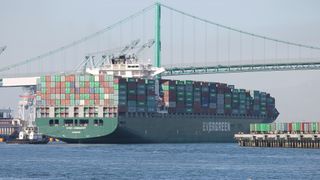Remote controlled container ships are closer than you think
€6.6m to develop the idea

The dream of a fully autonomous container ship just lurched a lot closer to reality thanks to a partnership led by Rolls Royce and Inmarsat to build a vessel fit to sail on its own.
Coming with a €6.6 million (around £4.79 million, $7.37 million, or AU$10.5 million) price tag, the project is funded by Tekes (Finnish Funding Agency for Technology and Innovation) and brings together a huge range of partners to try and make the autonomous ship a reality.
Inmarsat's role in the Advanced Autonomous Waterborne Applications Initiative (AAWA) is integral due to the fact that it will provide the satellite communications link and platform that makes remote control ships a reality. At the heart of it all is the firm's Fleet Xpress service that is delivered through its own Global Xpress and L-band constellations, the world's first hybrid Ka/L-band mobile satellite system.
"Fleet Xpress will enable the ship-to-shore communications required to support the remote control functionality fundamental to the realisation of the autonomous ship. The high-performance, high-throughput network will open up unlimited possibilities for maritime applications and real-time monitoring and analysis of data, for smarter shipping today and the future," said Ronald Spithout, President of Inmarsat Maritime, in a statement.
Enterprise opportunities abound
The project, which runs from now until 2017, will pore over the current body of research available and investigate the case for developing autonomous applications, the safety and security implications of remote controlled ships and other legal and regulatory complications that could arise.
Enterprises will be licking their lips at the opportunities that remote controlled ships will open up and be eagerly awaiting the results of the study that will tell us once and for all whether a satellite system has the power to control the world's shipping lanes without human intervention
Are you a pro? Subscribe to our newsletter
Sign up to the TechRadar Pro newsletter to get all the top news, opinion, features and guidance your business needs to succeed!
